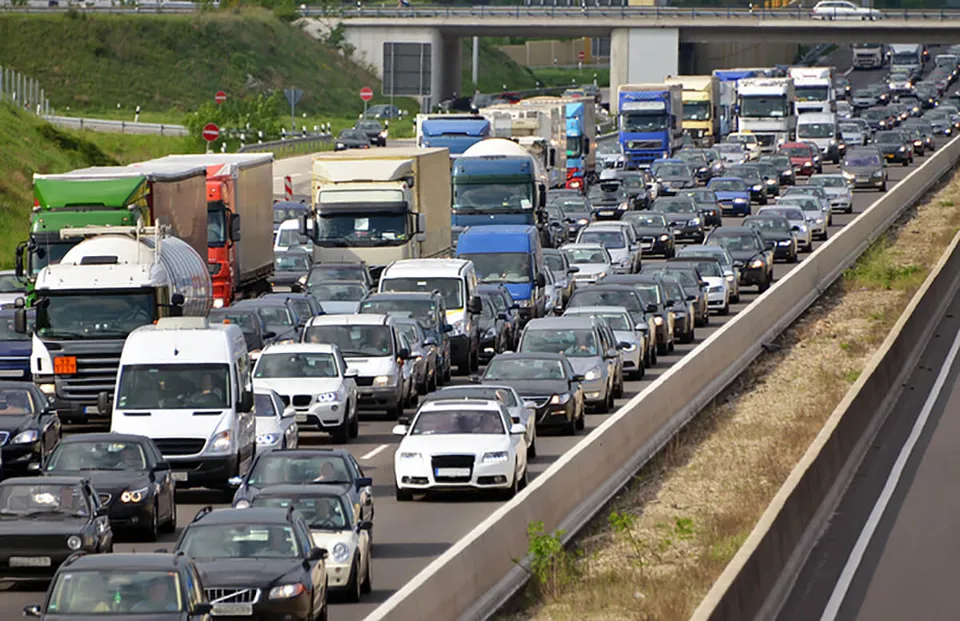Pollution-absorbing polymer, roads covered in canopies and more smart motorways are being considered by Highways England. The measures, which also include proposals to expand the rapid charging network for electric vehicles, are included in its air quality strategy.
Many motorway service areas have already installed rapid charging points, but Highways England says it will work with operators to ensure this becomes a “comprehensive national network”.
It says it is already working to ensure that 95% of the network will have a charging point every 20 miles and, where possible, these will be rapid charge points that can charge an ultra-low emission vehicle (ULEV) in less than 30 minutes.
Furthermore, to ensure it identifies the right measures to improve air quality and deploys them quickly on the network, it is undertaking 10 pilot studies which started in 2015 and are due to end next year.
They include a trial of a barrier incorporating a new polymer material with the potential to absorb nitrogen dioxide (NO2).
Highways England started trialling an air quality barrier on the M62 in 2015. The 100-metre long barrier was initially four metres high before being raised to six in early 2016, after which the polymer was introduced. If successful, they could be rolled out across the network to pollution hotspots.
However, Highways England says it is also investigating if it can reduce the costs to construct a canopy which would work in combination with the barriers to create a pollution tunnel.
Trials of a similar system have taken place in the Netherlands, where it was concluded the structures could be effective but the costs were considerable, at between €15 million (approximately £13.75m) and €70m (£64.2m) per kilometre of motorway.
Steve Gooding, director of the RAC Foundation, told Fleet News: “Clever engineers at Highways England are straining every sinew to improve air quality but this appears to be ‘blue sky thinking’ at its extreme.”
However, he said: “The idea of having a canopy appears to be more about containing the problem rather than solving it.
“What we need to see is accelerated ‘greening’ of the fleet, starting with the trucks where retro-fitting is an option and moving rapidly to vans where we need to see alternatives to the traditional diesel coming to market.”
The pilot studies being launched by Highways England also include the use of incentives to speed up the modernisation of the heavy goods vehicle (HGV) fleet and an electric van demonstrator project seeking to find ways to accelerate the uptake of the cleanest vehicles.
Details will be announced in due course.
Although emissions standards have tightened over time, there is still a significant number of older, more polluting vehicles.
For example, HGVs remain on the road for around seven years before they are replaced with cleaner vehicles while cars typically have a 15-year shelf life.
The Highways England strategy recognises replacing these vehicles is important given it is expanding the strategic road network with predictions that the volume of traffic is expected to rise by up to 55% between 2010 and 2040.
As such, it says it will assess the feasibility of introducing ULEVs for its traffic officers and explore opportunities to promote the use of low emission vehicles by its supply chain.
Looking further ahead, it says it also wants to explore methods to dynamically manage traffic, especially when air quality is poor and examine the use of technology to switch ULEVs to zero emission mode in areas of poor air quality.
Furthermore, Government cash is helping Highways England to deliver 50 continuous monitoring stations across the network to give real-time air quality information.
The first new monitoring stations were installed on the M1 through South Yorkshire and have been operating since summer 2015.
It says that man y more stations are now operating across the network and it is hoping to complete their installation by spring 2018.




















Login to comment
Comments
No comments have been made yet.